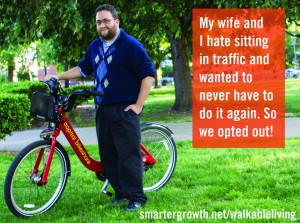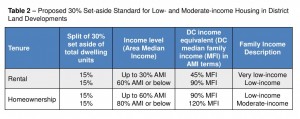At a recent public hearing, neighbors of McMillan Sand Filtration Site renewed calls to make it a park. But the only way that can happen is by developing part of it as a neighborhood, and it’s up to the DC Council to make it happen.

Rendering of the future McMillan Park.
Residents filled a June 6 public hearing held by the Office of the Deputy Mayor for Planning and Economic Development to oppose plans to sell the derelict 25-acre site to Vision McMillan Partners, who will build homes, shops, offices and a park there. But others, including Councilmember Kenyan McDuffieand groups like the Coalition for Smarter Growth say it’s the best way to bring McMillan back to life.
It would be prohibitively expensive just to make McMillan a park. Since the underground cells are made of unreinforced concrete, they would have to be demolished and rebuilt just to make them safe to enter. Allowing some private development will give the neighborhood new amenities while paying to keep the best of what’s already there.
Plan preserves historic structures while creating new park
VMP’s plan preserves all 24 of the plant’s above-ground structures, including the vine-covered sand silos visible from North Capitol Street, along with 2 of the below-ground filtration cells. 2/3 of the site will remain open space, while the southern third will become an 8-acre public park with a pool, recreation center, and a community center with meeting rooms and an art gallery. VMP promises that this will be “one of the largest and best-designed public park spaces in the District.”

Proposed site plan of McMillan redevelopment.
The historic buildings will become part of a new neighborhood with about 800 apartments and townhomes, half of which will be set aside for families making between 50 and 80% of the area’s median income. There will also be street-level, neighborhood-serving retail anchored by a 50,000-square-foot, full-service grocery store. Along Michigan Avenue, there will be taller office buildings with a medical focus, taking advantage of proximity to Washington Hospital Center across the street.
To make this happen, however, the DC Council must decide this fall whether to declare the land as surplus and “dispose” of it. They can do this either by selling it to VMP or granting it as-is to VMP under existing zoning, which wouldn’t allow major redevelopment to occur. They could also divide the property and sell off the parts to different owners and under different zoning. They can do all of this in a single set of hearings and votes, and they should to ensure that this process happens as quickly and fairly as possible.

This rendering shows how new and old buildings will coexist at McMillan.
Throughout the summer and fall, the council will hold separate public hearings on whether to surplus McMillan and the details of VMP’s plan. Meanwhile, the DC Historic Preservation Review Board is reviewing VMP’s plan to redevelop the site with housing, shops, offices and an 8-acre park and will hold hearings about it this month and in September. They’ve already offered comments about the proposal and will make their recommendations before the end of the year.
Plan will improve stormwater collection, traffic
Groups like Friends of McMillan Park and the DC Chapter of the Sierra Club argued that McMillan is already a public space and should become a public park. However, one DMPED official I spoke to after the hearing said that the city can’t afford to do the work necessary to make the site safe for public occupancy. If the District retains ownership, the site would most likely remain decrepit and fenced off indefinitely.

All 24 of the site’s historic above-ground structures will be preserved.
Opponents maintain that the site’s underground cells are needed to retain stormwater, mitigating the effects of frequent floods in Bloomingdale, which is downstream from McMillan. But DC Water already plans to replace two of the cells with water storage tanks, which will remain after redevelopment. Meanwhile, VMP has also promised to incorporate stormwater retention and buffers into the buildings and landscaping on the site, reducing stormwater runoff.
Another top complaint was traffic. Residents feel that the neighborhood’s roads are already quite congested, especially at rush hour, and could not handle the extra trips generated by a major office, retail and residential center on the McMillan site. There is no question that the Washington Hospital Center, the city’s largest non-government employer, needs better public transportation service, as it is not located near a Metro station.

Buildings will step down moving south from Michigan Avenue.
VMP plans to build a bus turnaround for shuttles between McMillan and the Brookland Metrorail station, which would operate until a planned streetcar line along Michigan Avenue is built. Moreover, North Capitol Street has been designated a Bus Priority Corridor, meaning that the city intends to make changes to the street design and traffic flows to permit faster and more frequent bus service. The development would also open new through streets across the McMillan site, improving traffic flow and connections within the larger neighborhood.
Ward 5 needs parks, but it needs housing too
Some opponents say that new development should happen elsewhere in Ward 5, like on vacant and abandoned lots along North Capitol Street or Rhode Island Avenue. While not enough resources have been dedicated to encouraging more infill development, there’s no reason why that can’t happen in combination with the redevelopment of McMillan.

Rendering of the completed McMillan Park.
It is true that Ward 5 needs more and higher-quality parks, recreation facilities, and community centers. But the surrounding neighborhoods and the city as a whole are growing and are need more affordable housing, as well as more diverse shopping and entertainment opportunities within walking or biking distance or a short transit ride.
VMP’s current plan reflects the input of community members gathered over the course of several design charrettes that were open to the public. It satisfies the need for several types of amenities in this part of the city in a balanced way. It combines buildings that are in keeping with the surrounding neighborhoods with a large park, and preserves some of the historic filtration cells and all of the silos and brick regulator houses.
We have an opportunity to transform a decrepit former public works site that has been fenced off for over 70 years into a citywide destination: a vibrant and attractive new place to live, work, shop and play that serves many of the needs of residents in this part of DC while incorporating many reminders of its unique history. The Council shouldn’t waste any time taking advantage of it, as an opportunity like this won’t come again soon.
If you’d like to tell DMPED and the Council to surplus McMillan and allow VMP’s plan to happen, you can contact them here. Comments must be received by June 20.
All images courtesy of VMP.
Click here to read the original story>>


































